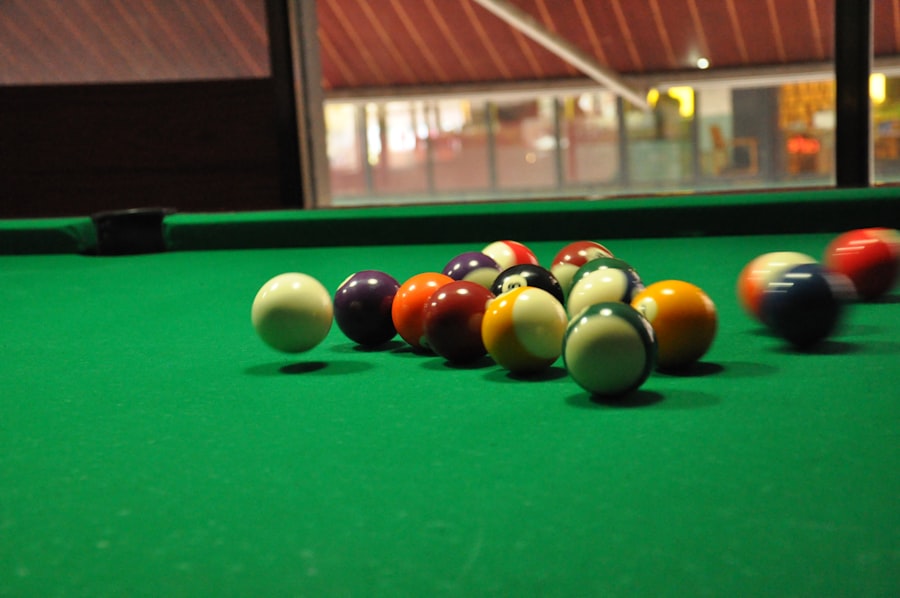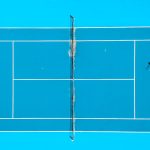Mastering Snake 8 Ball Pool: Tips and Tricks
Description
Aiming is a fundamental skill in billiards that can significantly influence your overall performance. To perfect your aim, players must develop a consistent pre-shot routine that includes visualizing the shot, aligning their body, and focusing on the target. One effective method is to use the “ghost ball” technique, where players imagine a cue ball positioned at a specific point that would allow it to strike the object ball at the desired angle.
This mental visualization helps in aligning the cue stick with the intended path of the cue ball. Practicing this technique repeatedly can enhance muscle memory, making it easier to replicate successful shots during actual gameplay. Power is another critical aspect of billiards that requires careful consideration.
The key lies in understanding how to apply the right amount of force for each shot. For instance, a delicate touch is often required for finesse shots, while a more powerful stroke may be necessary for breaking or long-distance shots.
Players should experiment with different levels of power during practice sessions to find the sweet spot that allows for both accuracy and control. Additionally, understanding the physics of how the cue ball interacts with the object balls can help players make more informed decisions about how much power to apply.
Key Takeaways
- Perfecting your aim and power is essential for successful billiards play
- Mastering spin and cue ball control can give you a significant advantage in the game
- Understanding the rules and strategies is crucial for making informed decisions during gameplay
- Practicing bank shots and caroms can expand your repertoire of shots and improve your overall game
- Learning advanced techniques for position play can elevate your game to the next level
Mastering spin and cue ball control
Spin is an essential element in billiards that can dramatically alter the trajectory and behavior of the cue ball after it strikes an object ball. Mastering spin involves understanding the different types of spin—topspin, backspin, and sidespin—and how they affect the cue ball’s movement. Topspin causes the cue ball to roll forward after contact, which can be useful for positioning it for subsequent shots.
Conversely, backspin allows the cue ball to reverse direction after hitting an object ball, providing players with greater control over their next shot. Sidespin can create angles that would otherwise be impossible to achieve, allowing for more complex shot-making opportunities. To effectively control the cue ball with spin, players must also pay attention to their stroke mechanics.
A smooth, consistent stroke is crucial for applying spin accurately. Players should practice hitting the cue ball at various points—above center for topspin, below center for backspin, and to the sides for sidespin—to develop a feel for how each type of spin affects the ball’s path. Additionally, understanding how different cloth conditions and table surfaces impact spin can further enhance a player’s ability to control the cue ball.
Regular practice with drills focused on applying spin will help players become more adept at using this technique in real-game situations.
Understanding the rules and strategies

A comprehensive understanding of the rules governing billiards is essential for any serious player. Different games—such as eight-ball, nine-ball, and straight pool—have unique rules that dictate gameplay and scoring. For instance, in eight-ball, players must pocket all of their designated balls (either stripes or solids) before sinking the eight ball to win.
In contrast, nine-ball requires players to hit the lowest-numbered ball on the table first and pocket balls in numerical order.
Strategic thinking is equally important in billiards. Players must assess not only their own position but also their opponent’s potential moves. This involves anticipating possible outcomes based on current table conditions and making decisions that maximize one’s chances of winning while minimizing those of the opponent.
For example, if a player has a clear shot but also sees an opportunity to block their opponent’s next move by leaving a difficult shot, they may choose to play defensively instead of aggressively pursuing their own points. Developing a strategic mindset requires practice and experience, as players learn to read the table and adapt their strategies based on evolving circumstances.
Practicing bank shots and caroms
| Player | Success Rate | Average Score |
|---|---|---|
| Player 1 | 75% | 8 |
| Player 2 | 60% | 6 |
| Player 3 | 80% | 9 |
Bank shots and caroms are advanced techniques that can significantly enhance a player’s skill set in billiards. A bank shot occurs when a player strikes an object ball so that it bounces off one or more cushions before going into a pocket. Mastering bank shots requires an understanding of angles and geometry; players must calculate the correct angle at which to hit the object ball to ensure it rebounds off the cushion accurately.
Practicing bank shots from various positions on the table can help players develop a keen sense of how different angles affect outcomes. Caroms involve striking one object ball so that it hits another object ball after making contact with the cue ball. This technique is particularly useful in games like three-cushion billiards, where players must hit both object balls in a single stroke while also making contact with at least three cushions.
To practice caroms effectively, players should set up specific drills that focus on different configurations of balls on the table. By experimenting with various angles and speeds, players can gain confidence in their ability to execute these challenging shots during competitive play.
Learning advanced techniques for position play
Position play is a critical aspect of billiards that involves planning shots in advance to ensure optimal placement of the cue ball for subsequent shots. Advanced position play requires not only technical skill but also strategic foresight. Players must think several shots ahead, considering how each shot will affect their next move.
This often involves using spin and speed to manipulate the cue ball’s path after it strikes an object ball. One effective way to improve position play is through targeted practice sessions focused on specific scenarios. For example, players can set up drills where they must pocket a series of balls while maintaining ideal positioning for each subsequent shot.
This type of focused practice helps players develop an intuitive understanding of how different shots affect cue ball placement. Additionally, studying professional matches can provide valuable insights into advanced position play techniques used by top players, allowing aspiring billiards enthusiasts to learn from their strategies and incorporate them into their own game.
Utilizing defensive shots and safety play

Mastering Defensive Techniques
To master defensive play, players should practice various safety techniques, such as leaving an object ball near a cushion or blocking access to multiple balls on the table.
Knowing When to Play Defensively
Understanding when to play defensively versus when to take an aggressive shot is key; sometimes sacrificing a turn can lead to better long-term positioning or force an opponent into making mistakes.
Learning from Past Matches
Analyzing past matches and identifying moments where defensive play could have changed outcomes can also provide valuable lessons for improving one’s overall game strategy.
Developing mental focus and concentration
Mental focus and concentration are often overlooked aspects of billiards but are vital for success in competitive play. The ability to maintain focus throughout a match can significantly impact performance levels, especially during high-pressure situations. Players should develop techniques to enhance their concentration, such as mindfulness exercises or visualization techniques that help them stay present during gameplay.
Creating a consistent pre-shot routine can also aid in maintaining focus. This routine might include taking deep breaths, visualizing the shot, or even repeating a mantra to calm nerves before executing a shot. Additionally, practicing under pressure—such as simulating tournament conditions during practice sessions—can help players acclimate to high-stakes environments where concentration is paramount.
Over time, these techniques can lead to improved performance and greater consistency in shot-making.
Mastering the break shot and controlling the table
The break shot is one of the most critical moments in billiards, setting the tone for the entire game. A powerful and well-executed break can lead to immediate scoring opportunities while also establishing control over the table. To master the break shot, players must focus on technique—specifically their stance, grip, and follow-through—as well as understanding how to strike the cue ball effectively.
Controlling the table after the break involves not only making successful shots but also positioning oneself strategically for future plays. Players should aim to spread out the balls effectively while leaving themselves with clear paths for subsequent shots. Practicing different break techniques—such as varying speed and spin—can help players discover what works best for them in terms of achieving optimal results from their breaks.
By honing these skills through dedicated practice and analysis of their performance, players can significantly enhance their overall game strategy and effectiveness on the table.
If you enjoy playing snake 8 ball pool, you may also be interested in trying out the game Super Mario Run. This article https://swertreslotto.com/2019/02/03/super-mario-run/ provides information on this popular mobile game that features the beloved character Mario. With similar elements of strategy and skill, Super Mario Run offers a fun and engaging gaming experience for players of all ages. Check it out and see if it becomes your new favorite game!
FAQs
What is Snake 8 Ball Pool?
Snake 8 Ball Pool is a popular online multiplayer game that combines the classic game of 8 ball pool with the concept of the snake game. Players control a snake-like line and try to collect balls on the game board while avoiding collisions with other players’ lines.
How do you play Snake 8 Ball Pool?
To play Snake 8 Ball Pool, players use the arrow keys on their keyboard to control the direction of their snake-like line. The goal is to collect as many balls as possible while avoiding collisions with other players’ lines. The game ends when a player’s line collides with either another player’s line or the game board’s boundaries.
Is Snake 8 Ball Pool free to play?
Yes, Snake 8 Ball Pool is free to play. Players can access the game through various online gaming platforms and do not need to pay any fees to play.
Can you play Snake 8 Ball Pool on mobile devices?
Yes, Snake 8 Ball Pool is available for play on mobile devices. Players can download the game from app stores and play it on their smartphones or tablets.
Are there any in-game purchases in Snake 8 Ball Pool?
Some versions of Snake 8 Ball Pool may offer in-game purchases for additional features or customization options. However, the core gameplay is typically free, and in-game purchases are optional.





